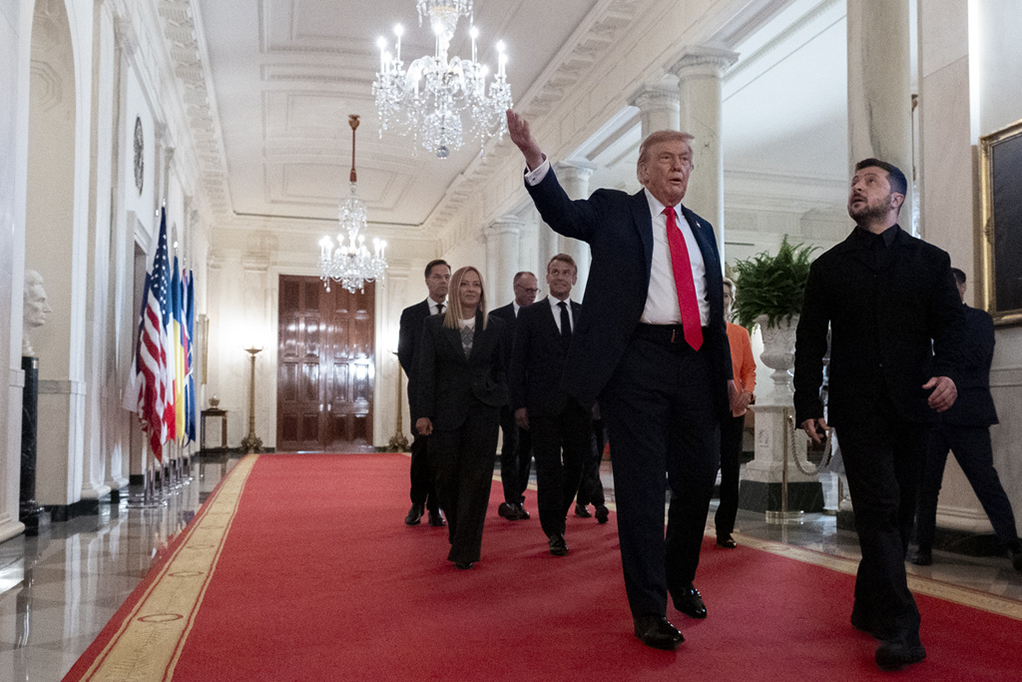Ukraine’s Security Guarantees: Latest Proposals in Focus

Security guarantees have become a central issue in discussions on a peace agreement for Ukraine. European countries are currently working closely with the US to agree on security guarantees for Ukraine ahead of a potential meeting between Presidents Zelenskyy and Putin.
Here are the main proposals for security guarantees currently being discussed to end the war in Ukraine.
Deployment of deterrent forces with international soldiers.
US President Donald Trump has expressed general support for security guarantees for Ukraine, without specifying their specific forms. At the same time, he categorically rejected the possibility of deploying American troops on Ukrainian territory, noting that the US would not participate in direct military action.
Nevertheless, about ten other countries are already ready to send their units.
Among the states ready to support the peacekeeping mission in Ukraine, France and Great Britain, which are co-chairs of the Coalition of the Willing, stand out in particular.
In the United Kingdom, Prime Minister Keir Starmer expressed London's readiness to take a leading role in providing security guarantees for Ukraine, but only on condition of a permanent ceasefire.
“In the event of a ceasefire, we are ready to send British soldiers to Ukraine. They are ready to go and act from the very first day,” said John Healey, the Defence Secretary.
Belgium, as well as the Baltic states of Lithuania and Estonia, have also said they're ready to send troops.
Lithuania is ready to send troops to a possible international peacekeeping mission in Ukraine if a broader coalition is formed and a stable ceasefire is established.
“It is too early to speak about this in detail, because the coalition of those willing to do it has only defined its mandate and will be activated only if peace is ensured. In other words, it will become a guarantor of peace,” President Gitanas Nausėda said.
At the same time, Latvia remains undecided. President Edgars Rinkēvičs noted that the decision to send troops would be made after a peace agreement had been reached and security guarantees had been finalized, and that his role in the mission would depend on the guarantees provided.
In general, there is a certain willingness among the countries of the Coalition of the Willing to participate in the peacekeeping mission, but the final configuration of forces and details of the operation are still being agreed upon.
Some states, such as Germany and Italy, are reluctant to send ground troops. Hungary and Slovakia oppose the deployment of European troops, with Hungarian Prime Minister Orbán calling it “inciting war.”
Air support
Another area of security guarantees for Ukraine that is being discussed more and more actively is air support. This option is seen as a kind of air cover, similar to the no-fly zones that were established over Iraq in the 1990s to protect minorities from attacks by Saddam Hussein's regime.
In Washington, the White House does not directly rule out this possibility. Spokeswoman Caroline Levitt said that providing air support to Ukraine is “an option and a possibility,” stressing that the US president has a number of military options at his disposal. This shows that the US is leaving room for more decisive action if necessary.
The UK is also signaling its willingness to contribute. This involves sending troops to protect Ukraine's airspace and ports, but without participating in direct combat operations on the front lines. London plans to focus on training and logistical support.
Alternative to NATO Article 5
During the summit in Alaska, US Special Envoy Steve Witkoff announced that Russian President Vladimir Putin had agreed to security guarantees for Ukraine, which he described as “NATO-style.”
Article 5 is a key principle of NATO and stipulates that an attack on any member state is considered an attack on all members of the Alliance; in practice, it has been invoked only once — after the terrorist attacks of September 11, 2001.
NATO Secretary General Mark Rutte confirmed that Ukraine's membership in the Alliance is not currently being considered, but an alternative “Article 5-type” agreement could be a viable mechanism for collective assistance.
"The situation is this - that the U.S. and some other countries have said that they are against NATO membership for Ukraine… But what we are discussing here is not NATO membership, what we are discussing here is Article 5 type of security guarantees for Ukraine and what exactly they will entail will now be more specifically discussed," he said.
In this context, Italian Prime Minister Giorgia Meloni proposed a security guarantee plan for Ukraine similar to NATO's collective defense principle, but without the country's actual accession.
This “NATO-light” would require signatory states to quickly coordinate their response in the event of a new Russian offensive, specifically within 24 hours of the incident. The mechanism could include defense assistance, economic support, strengthening of the Ukrainian armed forces, and sanctions against Russia.
Read more on The Gaze: Trump-Putin Gambit: Scenarios and Stakes for Ukraine